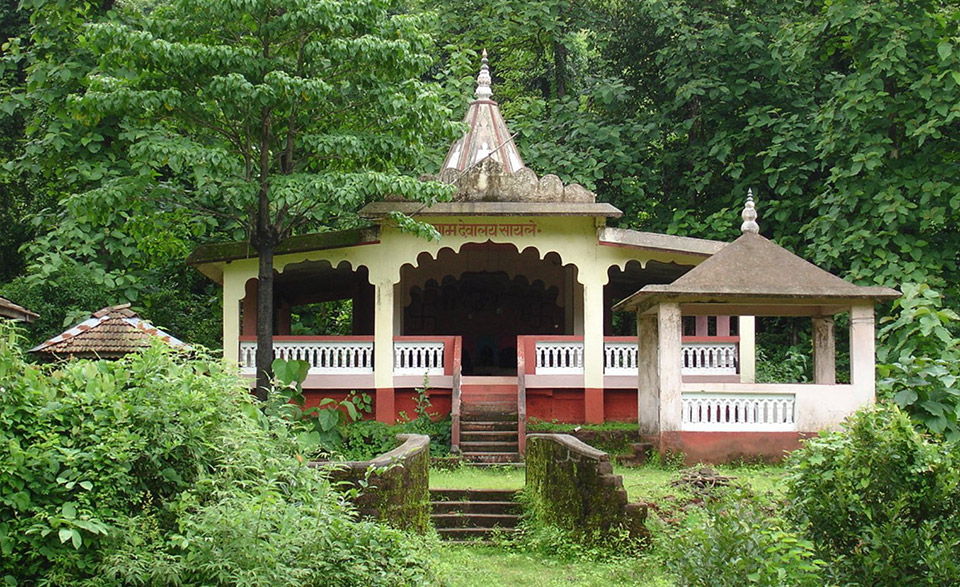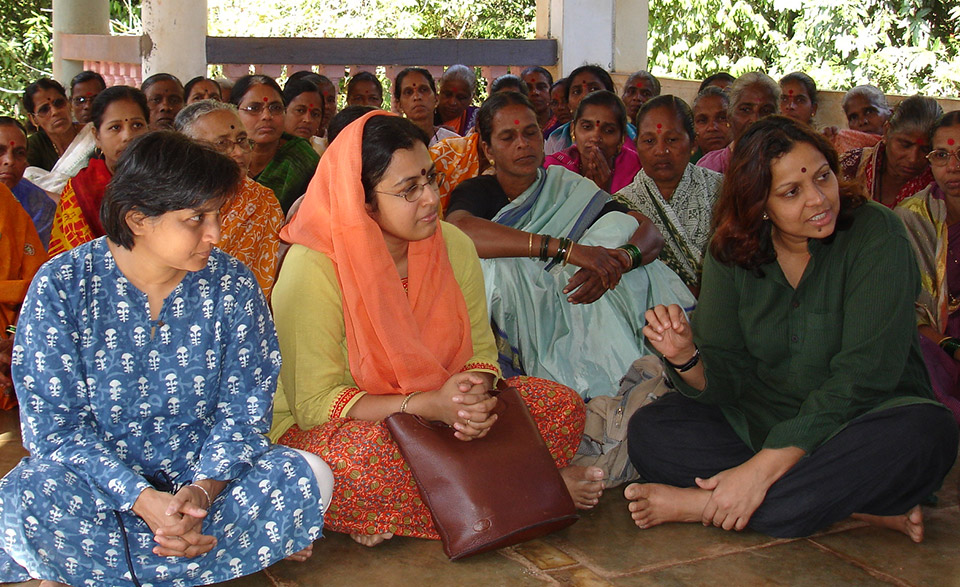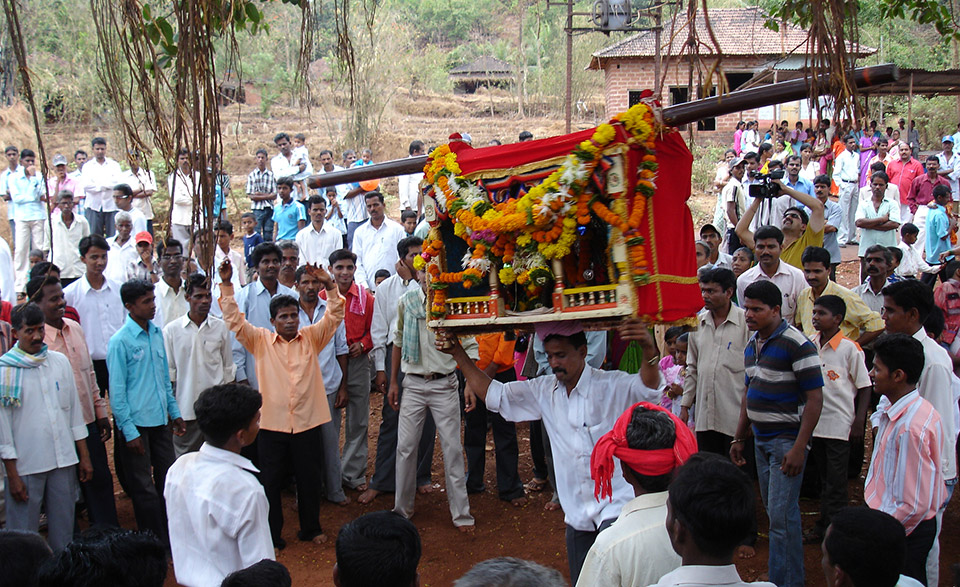Паўночна-Заходняй Гаты ў Індыі ў штаце Махараштра з'яўляецца экалагічна галіне фарміравання глабальнай гарачай кропкі біяразнастайнасці. Высокае біяразнастайнасць рэгіёну дапаўняецца высокім разнастайнасцю мясцовых традыцый у рэгіёне. Амаль кожная вёска ў Sahaydri-Konkan вобласць мае па крайняй меры адну святую гай з паверхні ў межах ад некалькіх да сотняў гектараў. Святыя гаі, якія захаваліся на працягу многіх сотняў гадоў, і сёння дзейнічаюць як рэзервуары біяразнастайнасці ўкрывальніцтва многіх відаў раслін і жывёл, як выпраўленая сеткі адносна некранутай дзікай прыроды.
Пад пагрозай.
Пагрозы
Пагрозы святыя гаі спыніць асноўным з аккультурации і глабалізацыя. Малы святыя гаі часта разглядаюцца як невялікія нязначна ўчасткі лесу, якія перашкаджаюць развіццю працы. Многія святыя гаі былі знішчаны, і толькі тэхнагенныя храмы былі захаваны. Прыклады прычын, чаму гэтыя гаі былі выдаленыя з'яўляюцца замахам, будаўніцтва дарог, пашу, будаўніцтва плацін і каналаў і урбанізацыі. Рашэнне змяніць або выдаліць пэўныя гаі часта прыязджаюць з навакольных вёсак, дзе павялічылася заходніх уплываў прывесці да паслаблення рэлігійных перакананняў, якая распаўсюджваецца па ўсім рэгіёне.
Зрок
Гэты рэгіён можа атрымаць выгаду ад адпаведнай формы сумеснага кіравання святых гаях, мясцовымі захавальнікамі, а таксама іншых рэгіянальных зацікаўленых бакоў. Найбольш перспектыўным спосабам дасягнення гэтага з'яўляецца аднаўленне культурных нормаў і пашырэнне правоў і магчымасцяў захавальнікаў, мясцовага насельніцтва і традыцыйных органаў кіравання. Доўгатэрміновая праца вельмі важная для стварэння цвёрдага альянсаў паміж рознымі бакамі. Бесперапынная фінансавая падтрымка неабходная разам з моцнымі бягучае садзейнічанне ў ажыццяўленні працэсаў. Гэта могуць быць эфектыўным сродкам для перадачы святых гаяў і іх биокультурных значэнне для будучых пакаленняў.
Дзеянне
AERF has worked specifically on up scaling and replication of the long-term management of sacred groves with community involvement in different villages. They have attempted to revive the traditional approaches to nature by raising locals’ awareness and by developing incentives for management. They have brought together stakeholders at both block and district levels.
Палітыкі і правы
The legal ownership of the groves is currently with the state revenue department.
The protection of sacred groves in the region cannot use the same legal system as that for forest protection because the rules for management are different. In some sacred groves, limited allowance of extraction is established for specific non timber forest products. Rules and regulations defined by the ancestors are not written down, and are sometimes twisted for short term benefits.
Захавальнікі
Traditional conservation practices such a sacred forests are an important component of the landscape in three districts of the north Western Ghats Maharashtra state. The groves are mostly owned by villagers who are still able to survive on their lands without having to develop their sacred groves. Management of the sacred grove including religious functions and protection is supervised and monitored by a group of village elders. The cultural significance is high, and most of the community festivals are celebrated in the temple situated in the sacred grove. Some of the groves also function as burial grounds and crematoriums and some are abodes of ghosts and deities. Except for water, people do not use any resources from these groves as is done in other regions in India.
Кааліцыя
The Applied Environmental research Foundation (AERF) has been working on sacred groves conservation in North Western Ghats for over 15 гадоў. In Sangameshwar block, AERF has revived the tradition of sacred groves and involved local people in planning as well as implementation for long-term conservation of the sacred groves.
Захаванне інструменты
Co-management is one of the important starting points, facilitating mutual understanding between parties. Stakeholder sessions have been organised, making different groups enthusiastic and curious about the sacred groves. The media play an important role in building consensus and awareness about environmental issues, but they could discuss more topics on sacred groves. AERF stimulates local communities to revive their ancient traditions through participatory work. They used local traditional myths, dance, song and ceremony to develop a common understanding of villagers’ cosmovision, restoring it where needed to support the maintenance of the sacred groves. Дадаткова, they make biodiversity inventories to reveal the gravity of the situation.
“Decisions such as seeking permission for using the sacred groves resources for the village well-being are generally taken in the temple”.
- Archana Godbole, Director of the Applied Environmental Research Foundation.
- Godbole, Sarnaik, Punde, (2010) Culture-based conservation of sacred groves: Experiences from the north Western Ghats, Індыя, У Verschuuren, Дзікі, Макнамі і Овьедо, Святых прыродных аб'ектаў: Захаванне прыроды і культуры, Зямля сканавання, Лондан.
- Applied Environmental Research Foundation in Pune, Індыя: www.aerfindia.org








